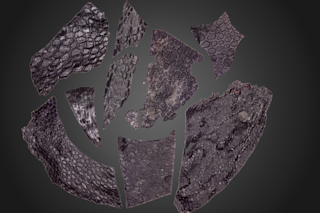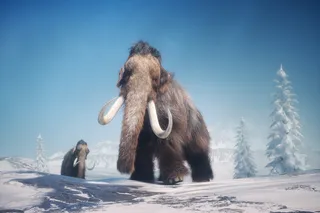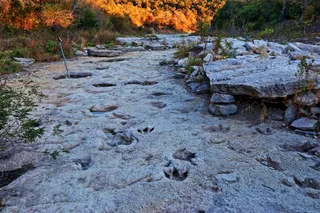Within a limestone cave system in Richards Spur, Oklahoma, paleontologists uncovered several detailed casts of the skin of an ancient animal. The skin resembles a crocodile hide's pattern and texture, with its detail so well-preserved that individual scales pop along the various casts. The skin may belong to one animal or several different species.
They are the oldest example of an outer layer of skin for animals found in terrestrial areas, like reptiles, birds, and mammals. A cast of this skin type may help researchers understand the evolutionary transition from life in the water to life on land during the Carboniferous Period when reptiles emerged. Findings were published in Current Biology.
A Preserved Epidermis
The fossil can reveal much to scientists despite being smaller than a fingernail. In fossilized specimens, skin and soft tissues are a rarity. Most, if ever found, are preserved through impressions, compressions, or permineralized.
The tiny specimen was conserved because of the cave's distinctive conditions. Fine clay sediments may have slowed the skin's decaying rate, and an oil spill in the cave and its oxygen-less environment likely led to its preservation.
"Animals would have fallen into this cave system during the early Permian and been buried in very fine clay sediments that delayed the decay process," said Ethan Mooney, a paleontologist and the study's first author at the University of Toronto, in a statement. "But the kicker is that this cave system was also an active oil seepage site during the Permian, and interactions between hydrocarbons in petroleum and tar are likely what allowed this skin to be preserved."
Read More: What Are Fossils and Where Are They Found the Most?
An Ancestor to Modern Animals?
To see the bumpy skin in exceptional detail, researchers used a microscope and found epidermal tissues, a tell-tale sign of amniotes, or the land animals with vertebrae that evolved from amphibian and fish ancestors.
During the Carboniferous Period, the evolutionary adaption of the amniote egg allowed the early tetrapods to lay their eggs on land — allowing the species to transition to a fully on-land lifestyle, according to the University of California Museum of Paleontology. Aside from finding a way to reduce their dependence on watery habitats, some amphibians also evolved thicker and scaly skin that did not need constant moisture, according to National Geographic.
Further examination of the skin sliver revealed distinct details that the patterns were like ancient and modern-day reptiles. Not only is the texture of the fossil similar to crocodile skin, but the spaces separating the scales are like those found in snakes and worms. According to the study, the skin's texture is like the dinosaur Edmontosaurus. Still, the team is not sure what early species the skin could belong to. No bones or other remains were found on or near it.
Read More: This Dinosaur Fossil Has Skin Intact – Here’s Why it’s Significant
Why Is Finding Fossilized Skin Important?
Finding a preserved epidermis is crucial to understanding evolutionary transition because it gives researchers a clue when this type of skin appeared on fossil records.
According to the study, seeing this type of skin this early hints that it may have proceeded the later evolution of hair follicles and avian feathers. An epidermis, or outer layer of skin, is needed for animals to survive on land. Skin is a barrier to an environment and protects against harmful bacteria and changes in temperature. It also protects the body's internal functions. The next step to survive on land was having a thicker skin, losing the mucus and having the ability to retain water.
Read More: Dinosaur "Mummies" Exist And Here’s How They're Made














